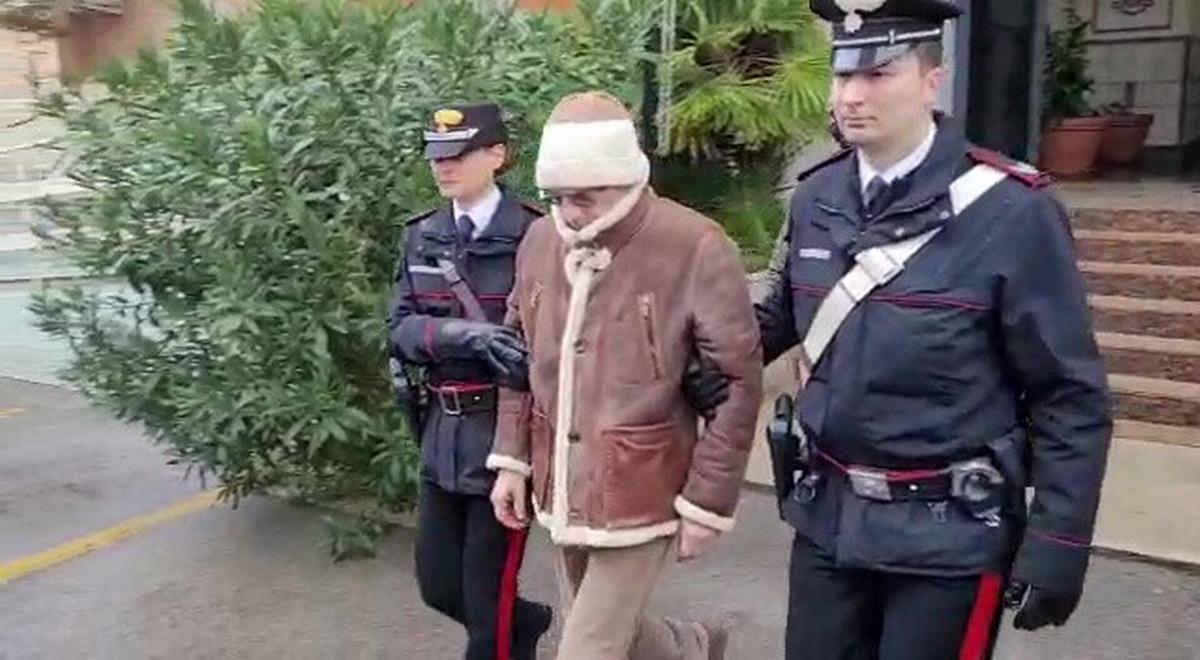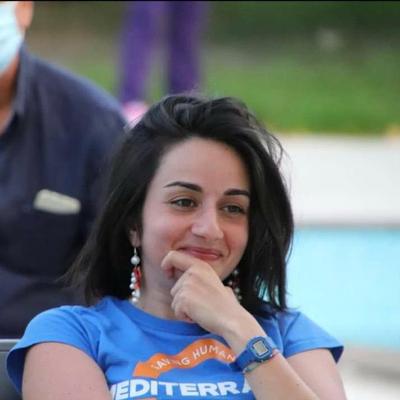
Corruzione legalizzata: massimizzare i profitti, minimizzando il rischio penale



24 maggio 2024
He called himself Francesco Averna, presenting himself as a surgeon with a degree from Milan's Bocconi University. Too bad there is no medical faculty at Bocconi. It was the false social identity acquired by the fugitive super Matteo Messina Denaro, who, under this name, had opened a profile on both Instagram and Facebook.
According to initial reconstructions, he used these two accounts to communicate with people close to him without running the risk of being intercepted, but above all to keep abreast of what was going on around him, by monitoring the profiles of businesses in Campobello di Mazara, in the Trapani area, where the boss's hideout was hidden. Profiles that are now under scrutiny by the Carabinieri of the Special Operations Group and the Palermo Public Prosecutor's Office in order to reconstruct the network that enabled Denaro to go into hiding for thirty years.
"Matteo Messina Denaro stands as a figure of interposition between the old and the new generation of organised crime figures"Marcello Ravveduto - Researcher
Using Open source intelligence (Osint) techniques, i.e. research, analysis, and collection of information from open sources, it is possible to get a picture of the "social life" of the boss of Cosa Nostra, who died last September of colon cancer. Through the use of an e-mail address and a mobile phone number, Matteo Messina Denaro is said to have created both virtual identities in February 2020: three years before his arrest on 16 January 2023 at the La Maddalena clinic in Palermo, where the boss was being treated, using the identity card, health card and tax code of a frontman, Andrea Bonafede. He had, however, invented his name and surname online, choosing as his profile picture a close-up photo of a small white dog with a blue bandana wrapped around its neck.
Interpol warns: "Cybercrime will be easier with artificial intelligence"
On Instagram, Francesco Averna followed 447 profiles and had 63 followers. While on Facebook he had just four contacts. Apparently unused channels, where no content is publicly visible, but which - according to investigators - were used by Messina Denaro for private messaging. Moreover, this is not the first time that the search for the super fugitive has touched upon social networks and Facebook in particular. Already in 2013, it was suspected that the boss might have exploited it to communicate with his sister Anna Patrizia, hiding behind the pseudonym of a Roman empress, Lucilla. Yet, it is from his interests that a certain way of looking at the digital space emerges. The boss followed almost only women, mostly from the world of show business, including several porn actresses.
A behaviour that does not surprise Marcello Ravveduto, lecturer at the University of Salerno and researcher, expert on mafias and cyberspace. "Matteo Messina Denaro stands as a figure of interposition between the old and the new generation of organised crime figures," Ravveduto explains to lavialibera. Significant, in this regard, are the likes left by the boss: restaurants, bakeries, pubs, bars and shops geographically close to him. A few examples: Casa Azul Café, Ciuri bistrot, Insonnia Discopub, Monnalisa beach and Panificio Totò. All realities that Messina Denaro probably frequented even while on the run and did not want to lose sight of. "For him," Ravveduto points out, "the Net was a way of keeping up to date with his interests and the territory he inhabited.
A modus operandi that characterised the entire early social era, as documented in research conducted by Ravveduto and published by Franco Angeli in May 2023. The study examined a huge amount of content published online from 2012 to 2022, highlighting how organised crime occupies "digital space as if it were physical space, with no break between imagination and reality". The way it has done this, however, has changed over time. The first phase was one of experimentation. "The mafiosi," the researcher continues, "began to exploit social networks in a playful manner, also making some glaring mistakes. This is the case, for example, of the selfie of Mondragone (in Campania) boss Augusto La Torre published on Facebook by his son in 2018, which prompted the Anti-Mafia Investigative Directorate to launch investigations into the family.
Of course, levity is not lacking even today, and it is not only Italian criminals who commit them. We need only think of Christopher Vincent Kinahan, leader of the so-called Kinahan cartel, an organised criminal group set up in Ireland, which is said to be responsible for dozens of murders and a business turnover in arms and drug trafficking worth a billion dollars: according to an investigation conducted by the investigative journalism website Bellingcat, as of 2019 an account named Christopher Kinahan, associated precisely with the boss himself, casually posted reviews on Google, providing a picture of his international movements: from Turkey to Spain, via Hong Kong and South Africa.
The fight against transnational organized crime, an urgent matter
But the young levers of crime use the new media more consciously. Today, young bosses do not share their position by mistake, but to show that they have control over a certain territory, challenging - in some cases - rival clans. The change of pace was initiated by Emanuele Sibillo, a young boss at the head of the paranza dei bambini('The trawler of children', a group of teenagers who wanted to gain power in the criminal world in Naples), killed in 2015 at the age of 20. He was the first to exploit geolocation to signal where he was, and how he moved, in the Neapolitan hinterland, so as to intimidate his enemies. And he was also the one who used social media to build a cult around his figure, which continues to this day. The hashtag #es17, the initials that Sibillo had tattooed on his heart and which corresponded to the letter S in the Italian alphabet but also to the number of misfortune in the Neapolitan smorfia, is linked to more than a thousand posts on both Instagram and TikTok: most of them, photos of Sibillo himself accompanied by declarations of brotherly love and respect. "Emanuele," Ravveduto continues, "was the first to exploit social networks in a symbolic way, creating a virtual community, but it was in 2014 that the irreversible transformation occurred, marked by a passing episode".
It happens when the victim of an ambush in Rione Traiano (Naples) posts photos of his wounds, anticipating revenge and initiating a short circuit between real and virtual: the criminal experience conditions the digital identity which, in turn, is influenced by the criminal reality. Ravveduto defines it as "mafia interreality" and characterises the phase dominated by the "criminal Google generation", i.e. those born between the late 1990s and early 2000s, who exploit social networks intuitively. The spread of TikTok is opening up a new season, where each media has a specific audience. "Facebook is aimed at the generation that watches generalist TV. Instagram is the equivalent of the glossy magazine, while TikTok allows live life storytelling, just like a reality show". In this context, the influencers of the mafias also emerge: the young scions of criminal organisations who talk about their lives. A life made up of travel, luxury, designer clothes, and nice cars, like that of any rich person. The star of TikTok was, for example, Crescenzo Marino, arrested in 2022 on charges of being part of the clan founded by his father and uncle. On the social site, Marino had more than 40,000 followers and regularly posted videos showing his nabob life: Ferrari rides in Paris, a house overlooking the beach in Mykonos, dinners in starred restaurants and friendships with trap singers.
A convention against transnational crime
Among the Italian mafias, the most social has always been the Camorra, not least because of its nature. "Whenever there is a deep connection with the street, the social narrative becomes more explicit," the researcher points out. This is the case not only for the Camorra, but also for the Catanese, Palermitan and Foggia mafias. The 'ndranghetists, on the other hand, appear less, especially from the Jonian side. However, the sons and daughters of some 'ndrangheta families, now living in northern Italy, do not escape the online account. An example are the young women of the Cutro Grande Aracri 'ndrina , present in Emilia Romagna and Lombardy.
'Ndrangheta, local roots and global opportunities
Despite the differences, the use of new media by our criminal organisations has one common trait, Ravveduto concludes: "There is no direction that controls and decides what content can be published. It is always the individual user who acts. There is no centralised propaganda activity aimed at strengthening the public image of the criminal organisation,as there is in Mexico with the Jalisco Nueva Generación cartel . Even when a feud is generated, those involved act individually, although in a joint and coordinated manner. The logic is that of the shitstorm. It is not the clan that organises the virtual attack but it is the circle that mobilises around the leader, multiplying the firepower".
This article was translated by Kompreno with the support of DeepL.
La tua donazione ci servirà a mantenere il sito accessibile a tutti
La tua donazione ci servirà a mantenere il sito accessibile a tutti

